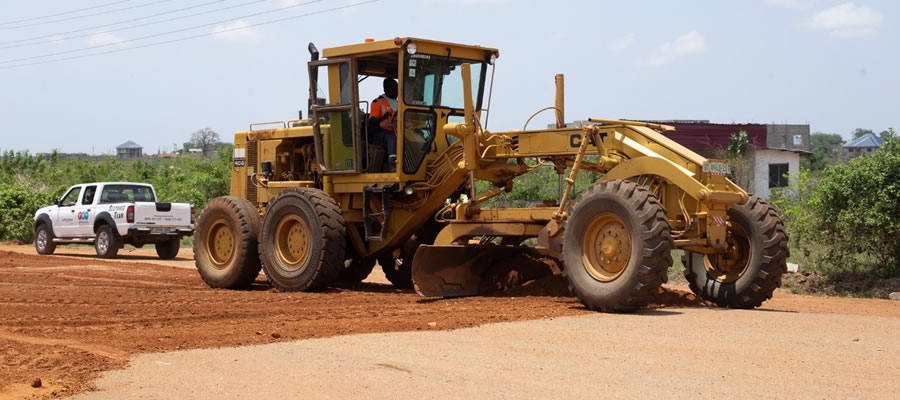

Introduction
Having examined the profile of the Municipality in line with the outcome of the reviewed 2014-2017 District Medium Term Development Plan, The MPCU through the Steering Committee for the Plan Preparation carried out an evaluation on the various communities in the Municipality to determine their issues and the relevant needs. Itemized below are the issues identified which were further processed to enhance decision making.
Key Development Issues under GSGDA II with Implication For 2018-2021
Table 2.11 below is the matrix of the harmonized key development issues under GSGDA II with implication for the 2018-2021
Harmonization of The Key Development Issues Under GSGDA II with Implications For 2018-2021 With Those of The NMTDPF, 2018-2021
In order to ensure continuity of the ongoing projects given under the Chapter 6, Article 35 of the 1992 constitution, issues associated with projects commenced under the GSGDAII are herein harmonized with the relevant issues under the National Medium Term Development Plan Framework 2018-2021
Prioritized Development Issues
The adopted issues were further subjected to order of relevance or prioritization to ease decision making. The prioritization carried out by the DPCU was done with much reference to the prioritization from the various Communities following the needs assessment exercises conducted. Other evidences considered were extracts from the situational analysis and the outcome of the 2014 -2017 development plan reviewed. Refer to table 2.14 for details
POCC
Application of the Concept of the Analysis of Potentials, Opportunities, Constraints and Challenges to the Adopted Issues
In order to determine how possible the adopted issues could be addressed, the adopted development issues were further subjected to POCC or AWOT analysis or evaluation. This affords management the means to determine as to whether there are available resources either internally or externally to provide remedy to the identified issues. Each issue under consideration was examined with reference to its potentials and associated constraints as well as the opportunities and the challenges. In effect conclusion is drawn on each issue regarding whether there are available resources to address the issues taking into account the associated constraints and challenges. The table below shows the details.
DEVELOPMENT GOAL, OBJECTIVES AND STRATEGIES
Introduction
The chapter outlines the District Development Focus, goal, projections, objectives and strategies to address the development issues confronting the Municipality. The National goals as enshrined in the Policy Framework were formulated to reflect on the needs, priorities and aspirations of the people in the various communities in Ghana and in this case the Kpone-Katamanso Municipality.
Development Focus
There are many Development issues to be addressed within the planning period which in effect directs the policy direction of the Planning strategies of the Municipality. Given the development issues adopted, the Municipal Assembly shall consider seven major Development Focus Areas alongside some minor areas to effectively address the issues.
The key Focus Areas for the 2018- 2021 planning period are as follows:
a) Education and Training
b) Agriculture and Rural Development
c) Efficient and Effective Health Services delivery, Sanitation, Drainage and Flood control.
d) Social Protection and Disaster Management
e) Youth Development, Employment and Provision of Decent Jobs
f) Transport Infrastructure Development and Maintenance
g) Corruption and Economic crime control
These development focus areas are adopted in line with the adopted issues to ensure and improve upon basic living standards, good governance and poverty reduction through efficient revenue mobilization, provision of quality basic socio-economic services, sustainable environmental sanitation and promote public private partnership.
National Goal
The National Vision geared at “a just, free, and prosperous nation with higher level of national income and broad-based social development was further classified into goals for easy policy directions to help reduce socio-economic inequalities, ensuring rapid reduction in poverty among others.
The goals are as follows:
a) Build a prosperous society
b) Create opportunity for all
c) Safeguard the natural environment and resilient built environment
d) Maintain a stable, united and safe society
e) Strengthens Ghana’s role in the international affairs
3.4 District Goal
Given the vision of the Assembly to improve the living conditions of the inhabitants of the Municipality through the provision of effective and efficient services within a conducive environment and a well-structured legal framework which is a true reflection of the National vision geared at “a just, free, and prosperous nation with higher level of national income and broad-based social development, the following goals were adopted to promote socio-economic development and improve the standard of living of the people in the Municipality without compromising the environment.
The objectives and strategies to address the adopted issues are outlined in conjunction with the adopted goals as stated below.
a) Build a prosperous society
b) Create opportunity for all
c) Safeguard the natural environment and resilient built environment
d) Maintain a stable, united and safe society
District Development Projections and Service Requirements for 2018-2021
This section projects the Municipality’s population for the plan period 2018 -2021to aid the determination the future status of some social and economic services/ facilities required within the plan period.
The Municipality’s population projection was based on the following assumptions:
a) The Municipality’s growth rate of 2.6 would not change significantly for the four-year plan period.
b) The fertility rate of 3.2 would not change significantly for the four-year period.
c) The rate of net migration in the Municipality might not have any significant effect.
d) The life expectancy was assumed to remain at 59 years within the plan period.
District Projected Population
The total population of the Municipality was projected to increase from 109,864 in 2010 to 146,239 with a growth rate of 2.6 in 2021.
Development Projections for 2018-2021
The development projections for the Municipality after the various analyses are as follows:
a) Increase Internally Generated Revenue at least by 19.03% on year to year basis by December 2021, however, total income is expected inched up significantly by about 218% for the planning period.
b) Improve access to socio-economic infrastructure and it related services by 50% by December 2021
c) Improve environmental sanitation by 75% by December 2021
d) Improve agriculture production by 100% by December 2021
e) Develop and implement approved land use planning schemes by 50% by December 2021
f) Improve street-naming and addressing system by 50% by December 2021
g) Increase the participation of women in decision-making by 50% by December 2021
h) Increase awareness creation and reduce the incidence of HIV/AIDS by 50% by December 2021
i) Promote awareness creation on Climate Change and its adaptation by 55% by December 2021
j) Promote the efficient operations of the sub-structures by 70% by December 2021
Adoption of District Development Goals and Sub Goals
This section sets out to establish the linkage among some key development policy units namely, the adopted policy goals, its objectives, and strategies in connection with addressing a specific development issue identified. It basically considers the goals of the development agent tailored towards its vision and then development issues that can hinder the realization of the set goals and objectives are considered for strategies to be adopted for redress.
District Development Goals and Sub-Goals
The table below shows the district development goals and sub- goals that reflect the needs of Kpone Katamanso Municipal Assembly as per adopted Medium term development plan (2018- 2021).
COMPOSITE ANNUAL ACTION PLAN
Introduction
This chapter looks at the composite annual action plan of the Assembly for the plan period 2018 -2021 indicating the programmes and related projects or activities slated for the respective years.
MONITORING & EVALUATION
Introduction
This chapter looks at how monitoring and evaluation will be conducted in respect to the implementation of projects and programmes. It also presents the strategies for communication and dissemination of the Medium Term Development Plan (MTDP).
Monitoring
Monitoring is the regular observation and recording of activities taking place in a project or programme. It is a process of routinely gathering information on all aspects of the project during implementation. The achievement of set gaols and objectives of the MTDP depends extensively on a well-developed and executed Monitoring and Evaluation that tracks maximum use of
resources that ensures high level of efficiency.
The purpose of the monitoring process is to see whether the projects/programmes are being implemented according to specification of the stakeholders of the projects and would throw a strong search light on the following critical issues on inputs and outputs i.e.
Indicators
An indicator is a variable that is normally used as a benchmark for measuring program or project outputs. It is “that thing” that shows that an undertaking has had the desired impact. It is on the basis of indicators that evidence can be built on the impact of any undertaking. Most often, indicators are quantitative in nature, however, in some few cases, they are qualitative. Indicators are for measuring progress whilst targets are specific, planned level of results expected to be achieved within a timeframe. These measurements lead to the stated goal and objectives indicated in the Programme of Action and the Annual Action Plan. Table 6.1 shows a Monitoring Matrix which have been developed by the MPCU, in collaboration with the NDPC to monitor the implementation of the Plan. The matrix also shows some selected core indicators and district indicators to be tracked as input into the national Annual Progress Report.
Date Created : 4/27/2023 12:00:00 AM












 facebook
facebook
 twitter
twitter
 Youtube
Youtube
 +233 593 831 280
+233 593 831 280 0800 430 430
0800 430 430 GPS: GE-231-4383
GPS: GE-231-4383 info@ghanadistricts.com
info@ghanadistricts.com Box GP1044, Accra, Ghana
Box GP1044, Accra, Ghana